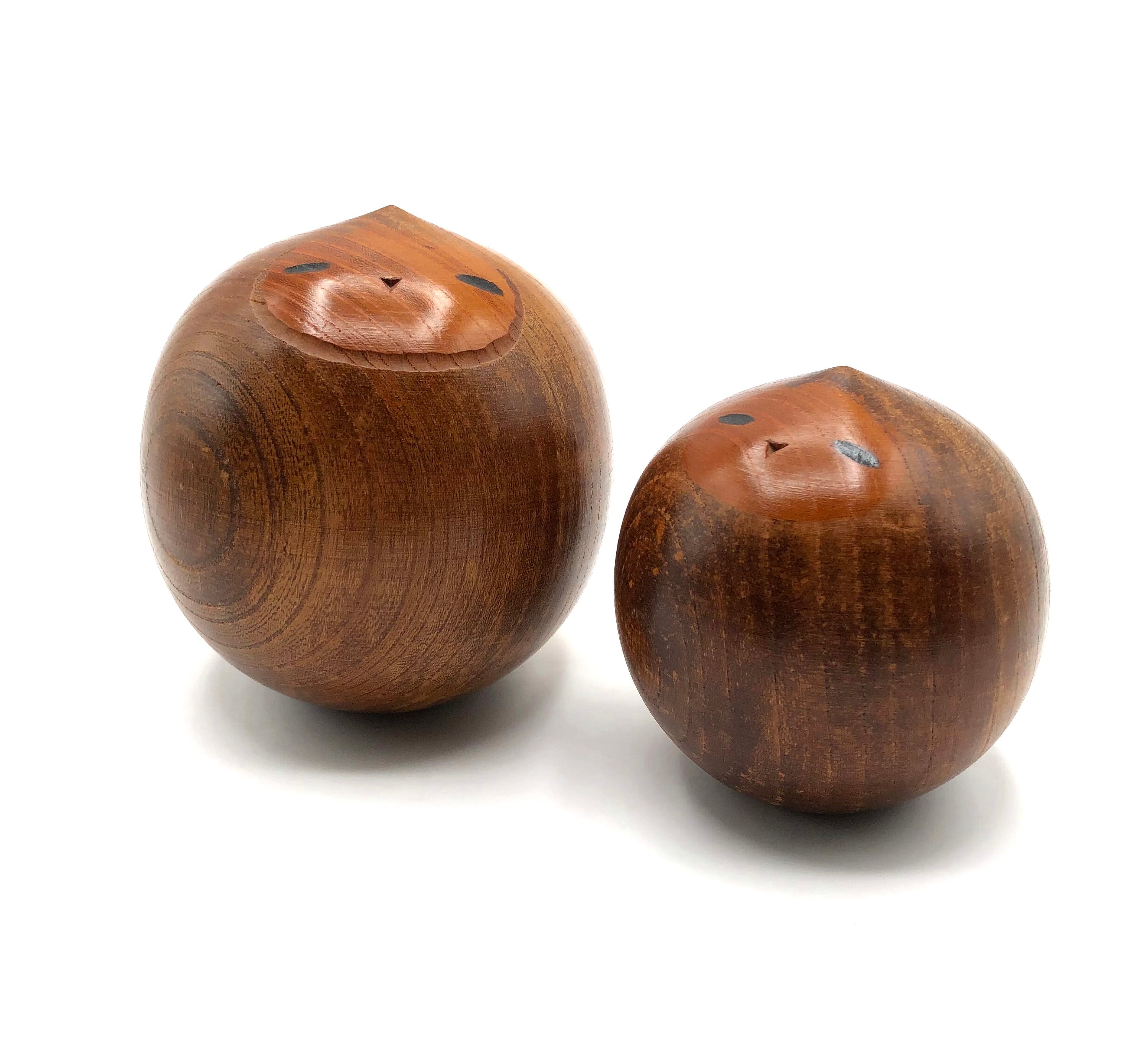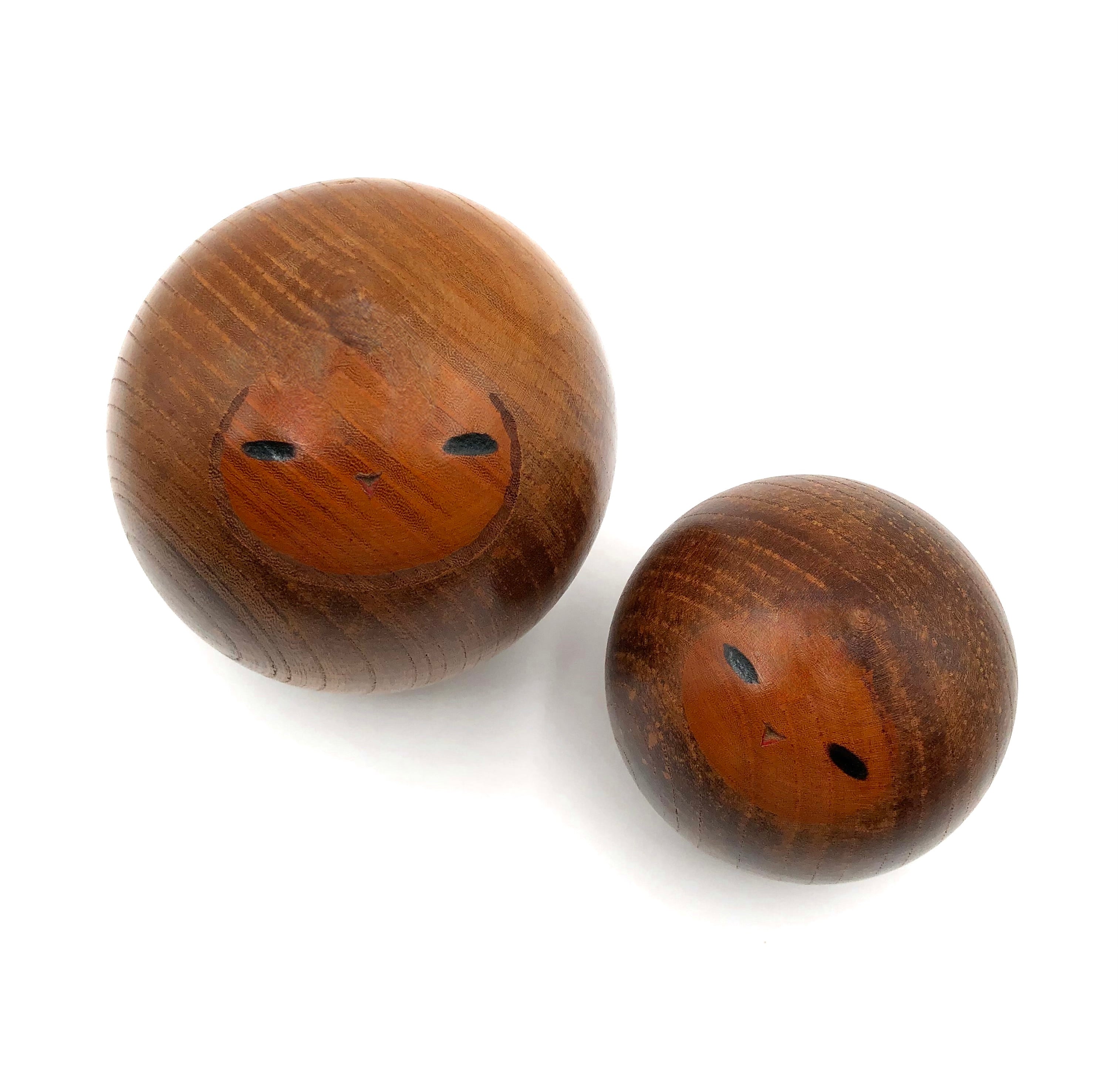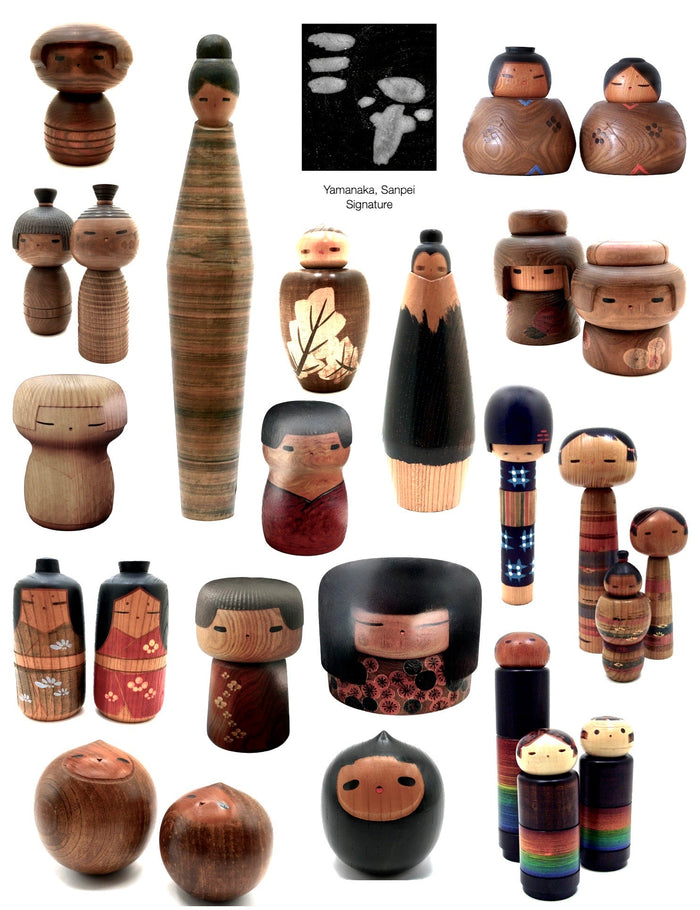

Vintage Pair of Sosaku Kokeshi entitled: “Dōjinai shimai | Unperturbed Sisters ” by Yamanaka, Sanpei (1926-2012
Dimensions: 4-1/2”h x 4-1/4”dia; 3-3/4”h x 3-1/2”dia.
Offered are a rare and old version of this form of Kokeshi by Yamanaka-san. Simplicity is so much more, when it celebrates the plain and the pure, just like these interpretations of children portrayed in this charming set. They, of course, are styled to imitate the chestnut, with their small pointed heads and childlike faces peering out at the world. Both play off of the natural characteristics of the wood, simply lathe-turned, relying on the wonderful texture and medium undertones of reddish shade of brown colorations.
The Japanese chestnut, ‘Kuri’, symbolizes the coming of the fall season in Japan. Yakiguri, (roasted chestnuts), can be found in street stands, markets, and at festivals. The largest doll has a faint Yamanaka signature which mostly has rubbed off over the years. The other has no signature which signifies that they were made as a pair by the artist.
Yamanaka-san received 20 awards for his Kokeshi including the prestigious “Prime Minister” award in 1979. The piece was published in Sosaku Kokeshi: Celebrating the Major Artists of the Creative Movement in 2022. For more information on this artist go to the following link: https://mingeiarts.com/collections/artisan-woodworker-yamanaka-sanpei-1926.
Condition: Excellent, meaning that the piece retains its original craft/workmanship showing a wonderfully developed patina commensurate with age. Both are void of damage, cracks, or breakage. This doll meets all the collectible Japanese Sosaku Kokeshi standards by Yamanaka, Sanpei.

Artisan
Woodworker: Yamanaka, Sanpei
1926-
Biographical History:
Born in Yonezawa, Yamagata Prefecture. He was originally a faculty member of the Engineering Department of Yamagata University and began his artistic career dabbling in photography. However, rather than develop a career in Traditional Yamagata doll making, Yamanaka-san used his photography background to join the Sosaku Kokeshi movement. Both is Kokeshi and his photographs received multiple awards in 1975. Yamanaka is a member of the Yonezawa Miyuki Association and the Photography Department of Nika Association as well as awards from the Ministry of Education Award, at the all Nippon Modern Kokeshi Exhibition in 1979. He published an exceptional illustrative book on how the environment influenced his Kokeshi motif. The book is only in Japanese and entitled: Village Poetry: Sanpei Yamanaka Photo Poetry Collection, 1988.
Collector's note – descriptive qualities, standard characteristics & ornamentation styles:
Yamanaka-san creates wonderfully painted and decorated dolls in many forms and shapes. He may utilize a palette of soft watercolor rings in the Rokuro-moyo manner, to create a suggestion of a rainbow, because in Buddhism, the rainbow is “the highest state achievable before attaining Nirvana, where individual desire and consciousness are sublimated”. On numerous occasions, Yamanaka adds painted flowers to add to the overall dimension of the garment that it is representing. This is not to say that he does not enjoy the natural qualities of wood. Controlled carving adds textures that are neat, random, and sometimes repetitive, and provides decoration to his dolls. The carving contrasts nicely with the natural grain of the wood. Dolls portray wonderful traditional hairstyles through the use of “chattering’ and controlled carving. His head and facial designs are most expressive, particularly in his portrayal of children.
